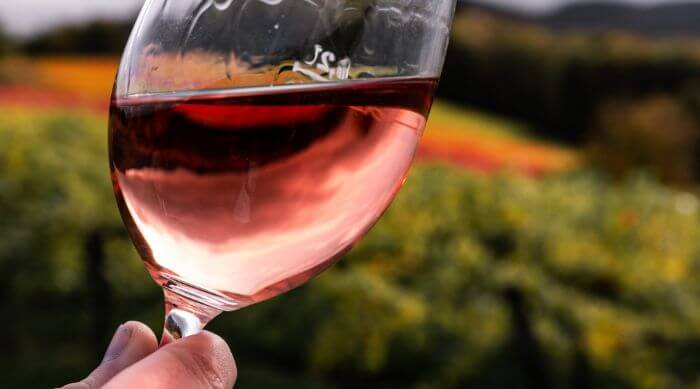The list of non-alcoholic wine options continues to grow with the rise of the sober curious movement. Some are certainly better than others, but they promise one thing over “real” wine: You can have good wine without the alcohol.
What is the point of non-alcoholic wine? The point of non-alcoholic wine is to offer wine drinkers an alternative to the negative effects of conventional wine.
In the short-term, a wine without alcohol means wine without hangovers. The long-term effects of drinking too much are well-documented. Whatever your reasons not to drink, you have options for healthier alternatives that claim to taste just like the real deal.
What does non-alcoholic wine taste like? Non-alcoholic wine tastes like wine in a lot of ways. Some have a good balance of acidity, while others are fruit-forward. Non-alcoholic sparkling wines and white wines get the closest to conventional pours when it comes to flavor.
But does non-alcoholic wine really taste like the real thing? Let’s take an honest look.
Table of Contents
What to Expect from Non-Alcoholic Wine
Typical Complaints About Alcohol-Free Wines
How Surely Removes Alcohol from Wine
Alcohol’s Role in Flavor
Alcohol adds a level of viscosity to wine. That’s the mouthfeel of a wine. The higher the alcohol content, the heavier the mouthfeel. That’s why reds like cabernet sauvignon or merlot sit on the palate longer at a wine tasting than a white wine like riesling, chardonnay, or sauvignon blanc.
Alcohol can also balance the wine. Without it, wines can quickly become too sweet or too high in acidity. High-quality brands work hard to bring some complexity back to the wine once the alcohol is removed, but the mouthfeel will always be a little different in a non-alcoholic wine.
As far as storage, non-alcoholic wines should be kept in a cool, dark place just like conventional wines to prevent spoilage. Most dealcoholized wines have either natural or added sulfites, a preservative, just like conventional wine.
At Surely, we recommend drinking your wine within 12 months of purchase or within 5 days of opening a bottle. Some conventional reds and sparkling wines may keep longer thanks to alcohol’s preservative qualities, but most wines should be consumed within a year.
What to Expect from Non-Alcoholic Wine
In some ways, finding the best non-alcoholic wine is similar to finding the best varietals of conventional wine. High-quality wines will taste better than low-quality brands.
Does non-alcoholic wine taste like juice? Non-alcoholic wine can taste like juice, but it shouldn’t. Low-quality non-alcoholic drinks may use a variety of additives to cover up the lack of alcohol.
A good dealcoholized wine shouldn’t taste like the sparkling grape juice you sipped on as a kid every New Year’s Eve. It will likely taste sweeter than what you’re used to, but high-quality brands aim to introduce flavors that add nuance to the finished product.
That may come from added fruit juices or sugars. That’s not a bad thing, as long as the wine isn’t overpowered by sweetness. It’s all about balance, and it’s important to read labels just as you would with any product.
Non-alcoholic wines also retain all the health benefits of wine. Non-alcoholic red wines retain heart-healthy resveratrol and other antioxidants found in conventional wine. What you won’t get is the resulting buzz or morning-after hangover after too much wine.
Typical Complaints About Alcohol-Free Wines
Lower quality brands can give wine drinkers the wrong idea about what to expect out of their non-alcoholic wines. Many tend to taste too sweet or too sour, or get a little too close to grape juice. Few get close to the complexity of conventional wine, especially for red wine drinkers.
Some of that can be addressed in how a non-alcoholic wine is made. Higher quality non-alcoholic wine brands return some of those aromas, flavor profiles, even light tannins back to the finished product as part of their winemaking process.
How Surely Removes Alcohol from Wine
What is the difference between non-alcoholic wine and regular wine? The difference between non-alcoholic wine and regular wine is in how the wine is made.
A non-alcoholic bottle of wine from Surely starts just like a traditional wine.
High-quality California grapes go through a fermentation process for the wine flavor, aromatics, and a hint of tannins you’d expect from a glass of wine. The alcohol is then removed used spinning cone column technology.
The wine goes through multiple passes in those spinning cones. After the first pass, the wine is stripped of compounds too volatile to handle the pressure from the cones. Those compounds are set aside for later to return some depth, flavor, and aroma to the wine.
Dealcoholization happens after the second pass. The winemakers allow the cones to do their work until the alcohol is reduced to an acceptable point. For non-alcoholic wines like Surely, that must be at or below 0.5% ABV.
That doesn’t mean the process is the same for all dealcoholized wines or low-alcohol wines. Some winemakers use vacuum distillation, or thermal distillation, to remove the alcohol from wine. Others use reverse osmosis and a special filtration process.
At Surely, our process is based on what we’ve learned about wine lovers. They want a wine that gets as close as possible to what they consider real wine.
How the Sober Movement is Changing the Industry
The sober curious movement refers to a growing number of people interested in giving up alcohol completely or being more mindful about drinking. Maybe they like how they feel when they’re not drinking alcohol, or like the idea of a healthier glass of wine.
That’s all good news for the non-alcoholic wine industry. More demand means more choices of non-alcoholic drinks, and more choice means low-quality brands start to move out of the way.
Even conventional winemakers have started to look at dealcoholized alternatives to add to their offerings. It’s good business sense to meet the demand of consumers seeking healthier wines.
Other Alternative Drinks for the Sober Curious
From craft mocktails to non-alcoholic beer and spirits, there’s no shortage of alcohol substitutes if you’re looking to cut back or observe Dry January, Sober September, or Sober October. The best part is, you get none of the negative effects of drinking too much.
If it’s real wine you’re after, try Surely. Our non-alcoholic sparkling Brut is perfect for special occasions. Interested in something pink? Try our non-alcoholic sparkling rosé. We work hard to bring you wines you’ll enjoy from the first sip to the last.
Sources
- Dealcoholized wines by spinning cone column distillation: phenolic compounds and antioxidant activity measured by the 1,1-diphenyl-2-picrylhydrazyl method
- Evaluation of Spinning Cone Column Distillation as a Strategy for Remediation of Smoke Taint in Juice and Wine
- Techniques for Dealcoholization of Wines: Their Impact on Wine Phenolic Composition, Volatile Composition, and Sensory Characteristics



![How to Win at Dry January 2023 [Plus Benefits & Downsides]](https://dropinblog.net/cdn-cgi/image/fit=scale-down,width=700/34240221/files/featured/dry-january.jpg)
